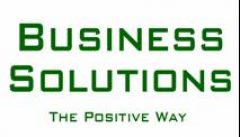If you are not generating the bottom line savings and profit improvement that you expect, there are several typical root causes. All cost reduction programs inevitably experience a fall in results. You can only cut your expenses so far before you kill the business. Read on to learn about root causes and solutions.
Has your cost reduction program slowed down?
Root causes for seeing fewer cost reductions or profit improvements:
- Suggestion programs always run out of steam. The ideas either stop coming or diminish in quality to the point where they begin to cost more than they save. “Paint the women’s bathrooms pink so we are happier and work harder.” is an example of a real suggestion. What do you think happened when the suggestion was not acted on? Right, nothing good.
- There is a real limit to how much you can cut costs. Cutting too deeply harms the ability to produce goods and services.
- Even continuous improvement programs like Six Sigma and Lean are destined to hit limits. People run out of time, energy, ideas and motivation. Incremental improvements stacked one on top of each other finally no longer have an ROI.
- The estimates for many cost reductions are bogus. They are based on the flawed thinking that an incremental change in a fixed or semi-variable expense like payroll can actually accrue to the bottom line. The reality is that saving 5% of a team’s time only gives them more time to check their emails and social media feeds. The only way to save 5% of that team’s payroll is to reduce the headcount. Or, to actually produce additional revenues from that incremental time…a very hard thing to do.
- Management sets other priorities. Employees are paid for and rewarded to achieve specific work tasks over and over again in a repeatable manner. They are all too busy to take on the extra task of changing what they do to reduce costs.
- Improvement demands change. The vast majority of people do not like change or know how to accomplish it. Change equals pressure. It is no wonder that people are reluctant to change even if it might be positive in the end.
What you can do now to reinvigorate your cost reduction and profit improvement program
- Conduct an assessment of your current program. We recommend the Advance Profit Improvement Analysis or something similar. Just asking your management team to do a critical reflection on where you are and where you need to go is a great first step.
- Include revenues and loss as well as expenses in your priorities. You cannot cut your way to long term success. Balance reductions with a focus on profitable revenues. We describe this balance in the Profit Equation.
- Stop losses. Remember that reducing losses such as waste, quality defects, overtime, accidents and other uncontrolled expenses can put money right to the bottom line.
- Evaluate your revenues. Not all customers or revenue streams are equally profitable. Fix or fire the losers.
- Reorganize your entire process with policies, procedures, leadership and priorities. We use the Profit Improvement Process. You can build your own and the book Achieving World-Class Profit Improvement is a great start. We have applied the principles that the book contains to put well over $100,000,000 on the bottom lines of many customers. How much of this do you want?
Summary
I will be the first to tell you that there is no one perfect model for continuous profit improvement but read this absolutely free whitepaper “Profit Improvement Executive Analysis” and I think you will agree that the Profit Improvement Process and the application of the Profit Equation can allow you to make the changes you need even if you are using an existing model.
